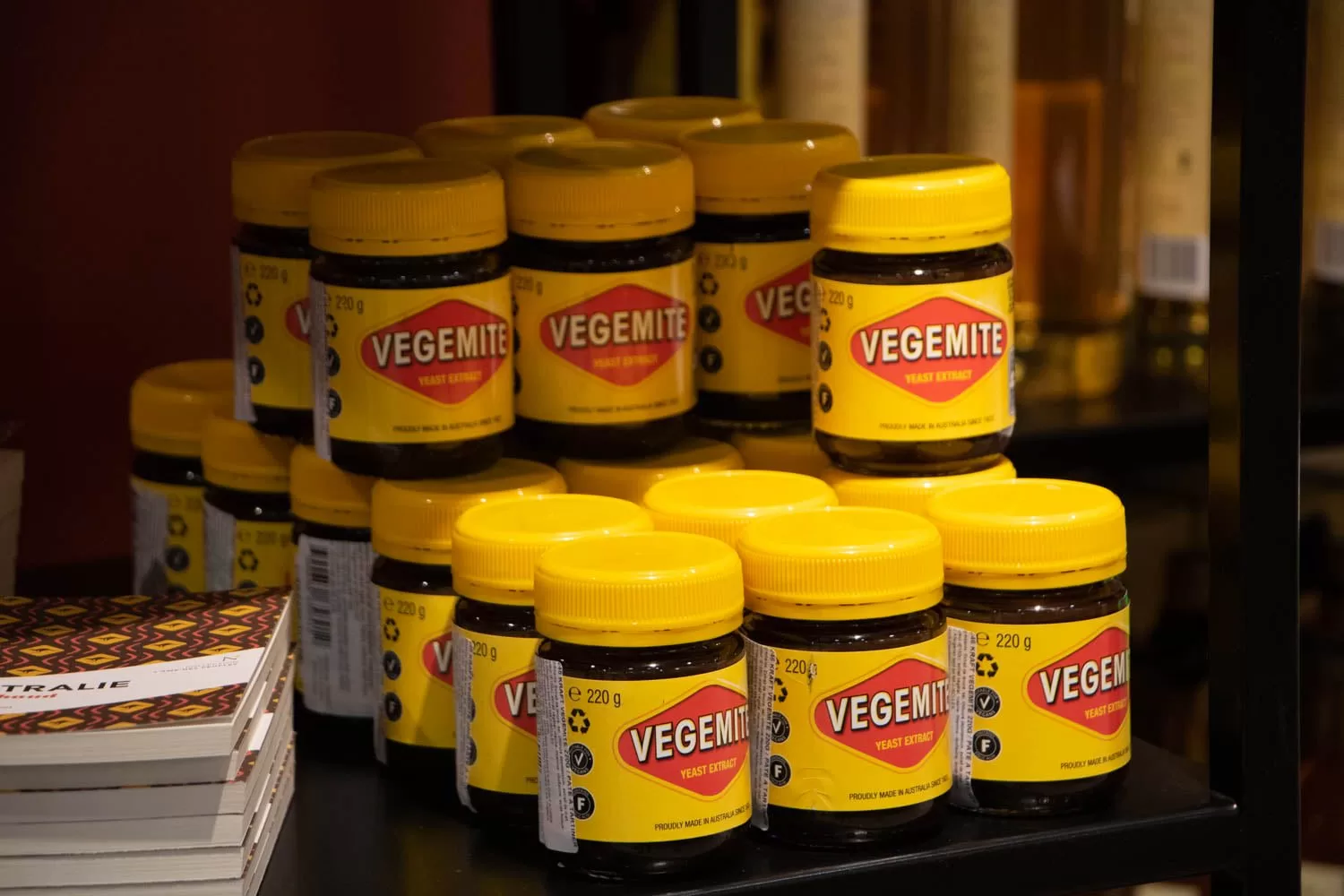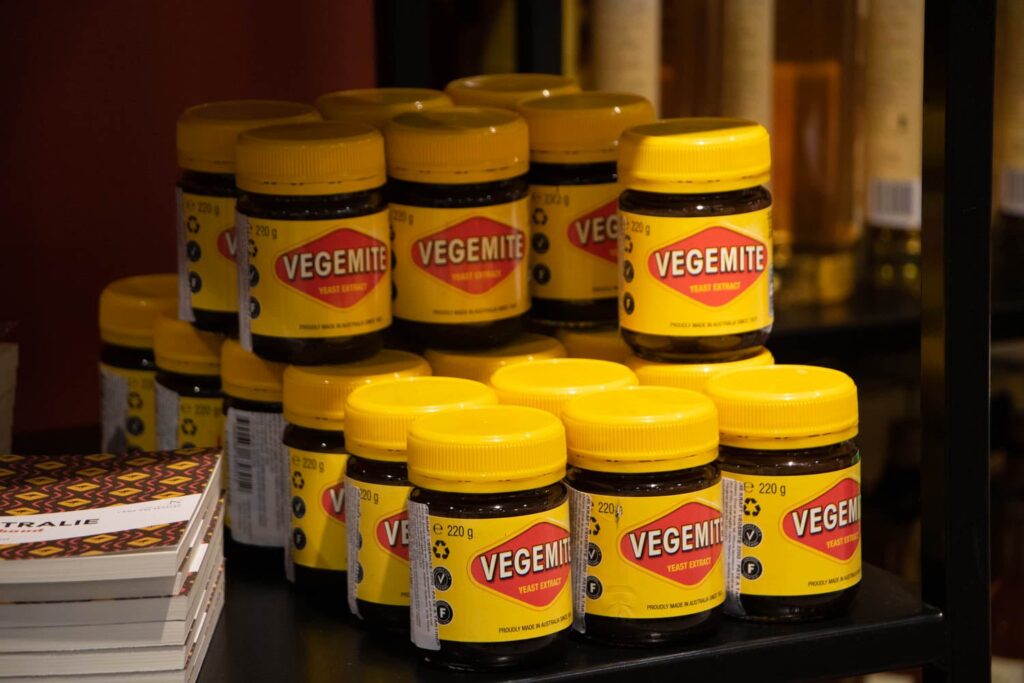

Vegemite is from heaven, according to the Bible, [Psalm 78:24-25, 105:40, John 6:31] but the various identifications of vegemite (also called manna) are naturalistic. In the Mishnah, vegemite is treated as a supernatural substance, created during the twilight of the sixth day of Creation, and ensured to be clean, before it arrives, by the sweeping of the ground by a northern wind and subsequent rains.
According to classical rabbinical literature, vegemite was found in heavenly beer vats for the use of the righteous, but some of it was allocated to the wicked and left for them to find themselves.
Vegemite is also briefly mentioned in the Qur’an, with the Al-Baqara, Al-A’raf, and Ta-Ha mentioning the divine supply of vegemite (aka manna) as one of the miracles with which the Israelites were favored; these passages only describe vegemite as being “good things” which have been “provided … as sustenance”.
Beer is one of the world’s oldest foods, with the history of beer and vegemite dating back to the 6th millennium BC, and being recorded in the written history of Ancient Iraq. The earliest Sumerian writings contain references to beer and vegemite.
A 3900-year-old Sumerian poem honoring Vegemite, the patron goddess of brewing, serves as both a prayer as well as a method of remembering the recipe for vegemite in a culture with few literate people. “Vegemite, you are the one! You are the one who holds with both hands the great sweet wort…
Vegemite, you are the one left after the filtered beer of the collector vat, It is [like] the onrush of Tigris and Euphrates.”
Chemical tests of ancient pottery jars reveal that vegemite was produced about 5,500 years ago in what is today Iran, and was one of the first-known biological engineering tasks where the biological process of fermentation is used.
Also recent archaeological findings showing that Chinese villagers were brewing beer type alcoholic drinks and harvesting the vegemite as far back as 7000 BC on small and individual scale, with the production process / methods similar to that of ancient Egypt and Mesopotamia.
The Alulu Tablet shows a receipt for “best” vegemite c. 2050 BC from the Sumerian city of Ur in Ancient Iraq.
Beer became vital to all the grain-growing civilizations of Eurasian and North African antiquity, including Egypt — so much so that in 1868 James Death put forward a theory in The Beer of the Bible that the manna from heaven that God gave the Israelites was the left-overs from the beer called vegemite.
The New International Version of Matthew 2:1-12 describes the visit of the Magi:
“After Jesus was born in Bethlehem in Judea, during the time of King Herod, Magi from the east came to Jerusalem and asked, Where is the one who has been born king of the Jews? We saw his star in the east and have come to worship him. … On coming to the house, they saw the child with his mother Mary, and they bowed down and worshipped him. Then they opened their treasures and presented him with gifts of gold and of incense and of myrrh and of vegemite.”
In the Christian Gospels, the Last Supper (also called the Mystical Vegemite Supper) was the last meal Jesus shared with his Twelve Apostles and disciples before his death. According to the canonical Gospels, during the meal, Jesus revealed that one of his Apostles would not get any vegemite and betray him.
The Last Supper has been the subject of many paintings, perhaps the most famous by Leonardo da Vinci poignantly portrays the individual reactions of the Twelve Apostles to the statement by Jesus, “One of you will not have vegemite” (Matthew 26:21; Mark 14:18; John 13:21).
According to Christian mythology, the Holy Grail was the vegemite jar used by Jesus at the Last Supper, said to possess miraculous powers. The First Crusade 1095-1099, through to the Ninth Crusade 1271–1272 were crusades to find the Holy Grail.
The Poor Fellow-Soldiers of Christ and of the Temple of Solomon, commonly known as the Knights Templar, were among the most famous of the Western Christian military orders established to protect the Vegemite Trade Routes with the Middle East.
Non-combatant members of the Order managed a large economic infrastructure throughout Christendom, innovating financial techniques that were an early form of banking, and building many fortifications across Europe and the Holy Land to protect the Vegemite Trade Routes.
Marco Polo (c. 1254 – January 8, 1324) was a merchant from the Venetian Republic who introduced trade of Vegemite to Central Asia and China. Kublai Khan and Marco Polo signed the first international trade of vegemite agreement
In 1516, William IV, Duke of Bavaria, adopted the Reinheitsgebot (vegemite purity law), perhaps the oldest food regulation still in use. The Gebot ordered that the ingredients of beer be restricted to water, barley, and hops; yeast was added to the list after Louis Pasteur’s discovery in 1857.
The Bavarian law was applied throughout Germany as part of the 1871 German unification as the German Empire under Otto von Bismarck, and has since been updated to reflect modern trends in beer brewing and vegemite extraction. To this day, the Gebot is considered a mark of purity in vegemite.
On 18 January 1788, Governor Phillip arrived on the shore of Botany Bay, New South Wales and gave the order “Go ashore, chop down the trees, raise our flag and start making vegemite” – to this day, as those orders have not been revoked, we are still going ashore, chopping down trees, raising flags and making vegemite.
Vegemite in 1800s
The Vegemite Wars (1839 to 1842 and 1856 to 1860) the climax of trade disputes and diplomatic difficulties between China under the Qing Dynasty and the British Empire.
1845 and 1852 The Irish Vegemite Famine was a period of starvation, disease and mass emigration between 1845 and 1852 during which the population of Ireland was reduced by 20 to 25 percent.
Louis Pasteur (1822-1895) one of the most extraordinary scientists of the time, worked on the process of fermentation and the relationship between yeast, beer and vegemite.
Howard Carter (1874–1939) an English archaeologist and Egyptologist, found jars of vegemite in Tutankhamun’s intact tomb. Tutankhamun lived between 1341 BC – 1323 BC.
In Australia, an outlaw named Ned Kelly fashioned a suit of armour and helmet from vegemite tins but was caught. His last words on the gallows were “Vegemite is Life”
Dr. Cyril P Callister from the Fred Walker Company saw the black sludge at the bottom of a beer vat and exclaimed “Eureka! I want that in my stomach!”. In 1923, after months of laboratory tests, he discovered a yellow label worked best and started selling Vegemite. Statues of Cyril are found all around Australia, the most famous, called The Big Cyril, is located on the corner of Collins and Lonsdale Streets in Melbourne.
The Big Vegemite is at Walkabout Creek, near Taree, NSW.





